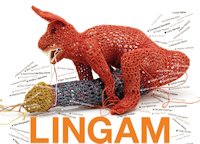 From 17 January 2010 until 26 February 2010, Museum Catharijneconvent in Utrecht, Netherland will present the exhibition Lingam: , with more than 120 contemporary interpretations of an age-old Eastern religious fertility symbol: the lingam. At the invitation of guest curator Ruudt Peters, artists, designers, and jewellery makers from 24 countries – including NKvB member Joop Haring, Marcel Wanders, Ted Noten, and Johanna Schweizer – have drawn inspiration from this ancient tradition of fertility symbolism.
From 17 January 2010 until 26 February 2010, Museum Catharijneconvent in Utrecht, Netherland will present the exhibition Lingam: , with more than 120 contemporary interpretations of an age-old Eastern religious fertility symbol: the lingam. At the invitation of guest curator Ruudt Peters, artists, designers, and jewellery makers from 24 countries – including NKvB member Joop Haring, Marcel Wanders, Ted Noten, and Johanna Schweizer – have drawn inspiration from this ancient tradition of fertility symbolism.
The lingam is a wooden or stone object in the shape of a phallus, which represents life and fertility. In Hindu and Buddhist cultures, the lingam is worshipped and revered. It is not only a fertility symbol, but also stands for a primeval creative force, a force that is strongly linked to sexual energy. In Southeast Asia, reverence for life and religion are closely linked. Lingam worship takes place frequently and in public places. In contrast, in the West, the lingam is seen mainly as a symbol of lust and sex. The exhibition Lingam: Fertility NOW aims to provide artistic alternatives to our present-day Western interpretation of the lingam and, in the process, to take a fresh look at this symbol’s original, sacred context.
The exhibition curator, Ruudt Peters, is an artist and professor at the Ädellab at Konstfack University College of Arts, Crafts and Design in Stockholm, and this event marks his departure as a teacher there. His fascination with the lingam inspired him to ask artists and designers to create their own fertility symbols. These contributors explored the subject through the lens of their own experiences, each producing a personal artistic statement about fertility. To emphasize the original, sacred context of this type of object, the exhibition Lingam: Fertility NOW at Museum Catharijneconvent will pair these modern-day fertility symbols with their historical predecessors.

